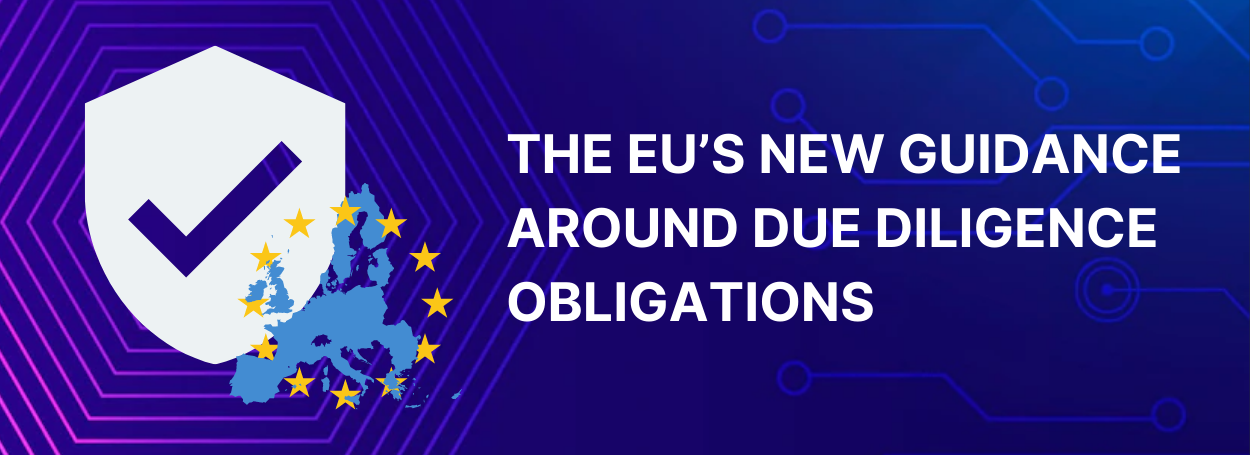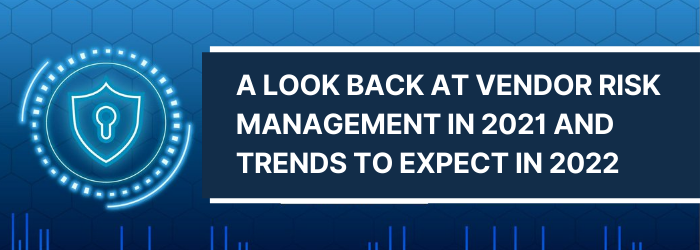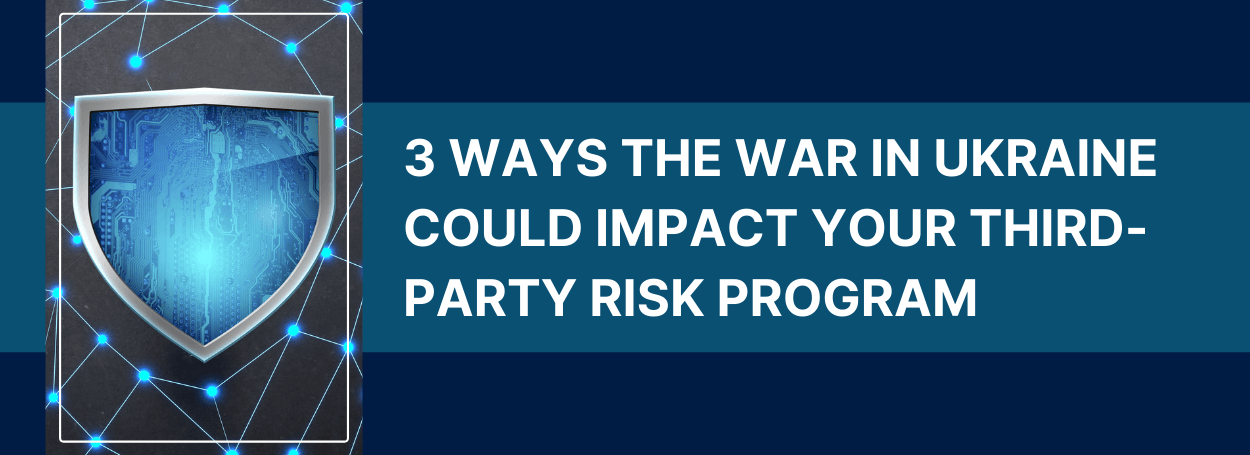The EU’s New Guidance Around Due Diligence Obligations

Combating forced labor is a top priority in the European Union (EU). Following the EU Charter of Fundamental Rights, they are committed to ending all human rights violations at work.
The EU has promoted the protection of victims of forced labor by ratifying and effectively implementing International Labour Organization (ILO) fundamental conventions and other guidelines of the United Nations (UN). The EU encourages the global protection of human rights and has held a long-standing commitment to “decent labor.”
Responsible corporate behavior is critical to ensuring that EU regulations on human rights, particularly labor rights, are successfully implemented. The EU is dedicated to supporting the adoption of responsible business practices in all production areas.
Therefore, good businesses must develop new due diligence practices around forced labor to protect their stakeholders.
The EU’s Latest Due Diligence Guidance on Forced Labor Risk in Supply Chains
The European Commission and the European External Actions Service published “Guidance on Due Diligence for EU Businesses to Address the Risk of Forced Labour in their Operations and Supply Chains” on July 12, 2021.
The document provides practical advice on implementing forced labor corporate due diligence and fulfills a promise in the Communication on Trade Policy Review issued in February 2021.
The Guidance reflects businesses’ increased economic, public, and political demands to analyze and manage human rights risks in their business and supply chains, both globally and within specific jurisdictions.
Although the Guidance is non-binding and notes that it does not represent any official policy stance, it is of particular significance in the Commission’s desire to establish legislation requiring businesses to conduct human rights and ESG due diligence.
Key Considerations for Due Diligence Workflows
The Guidance contains several recommendations for human rights due diligence and compliance, adapted to possible situations that companies may face. These considerations are:
Assessing Forced Labor Risks
When addressing the risk of forced labor in high-risk suppliers or supply chain segments, it’s essential to strengthen the checks whenever threats are detected. Enhanced assessments of recruitment agencies and suppliers established in high-risk areas should be a core element of any effective due diligence process to prevent human rights abuses.
Companies should be able to carry out unannounced audits of suppliers’ workplaces and interview workers in a secure environment to prevent any risk-masking. Extensive stakeholder engagement in high-risk areas improved personnel training, and tighter prequalification processes for suppliers are all considerations.
Companies, especially EU companies, should support company-level social discourse by equipping employee representatives with the tools they need to negotiate effective union contracts. Real threats and conditions for disengagement should be incorporated if progress is not proven, following agreed-upon dates and indicators through corrective action plans.
State-Sponsored Forced Labor
It’s crucial to determine if suppliers or business partners have the freedom to choose their raw material suppliers or if they are required to engage in government-sponsored labor programs. Think about how to reach out to governments accountable for state-sponsored forced labor programs, either directly or through letters from business organizations.
Responsible Disengagement for Non-Compliant Suppliers
Disengagement from a business relationship is an appropriate last resort after failed attempts at preventing or mitigating severe impacts and when there is no reasonable prospect of change. In many cases, the real potential of disengagement is required for an enterprise’s leverage to be successful.
In these cases, businesses should also think about and manage the negative consequences of that decision. If an organization decides that disengagement is the best course of action, it may take several steps to ensure the disengagement process is safe.
Remediation
When a company recognizes that it has caused or contributed to negative consequences, it should address them by assisting with their remedy. When possible, organizations should work with the supplier to restore the victims to the condition they would have been in if the adverse effect had not occurred.
Remediation efforts should be proportional to the severity and scope of the negative impact. In addition, companies should work with local authorities to monitor the appropriate remedies and avoid the potential recurrence of forced labor.
Due Diligence Best Practices Moving Forward
The Guidance is heavily based on existing international standards, specifically the International Labour Organization (ILO) fundamental conventions, the UN Guiding Principles on Business and Human Rights, and the Organisation for Economic Co-operation and Development (OECD) Guidelines for Multinational Enterprises (MNE).
The new Guideline suggests that due diligence should be carried out in line with the OECD Due Diligence Guidance for Responsible Business Conduct’s six-step framework:
Develop a Responsible Business Conduct Policy
Companies should develop and enforce responsible business conduct (RBC) policies and embed them within their management system. These policies express the enterprise’s commitment to the principles outlined in the OECD Guidelines for MNEs and its intentions for implementing due diligence relevant to its operations, supply chain, and other business relationships.
The enterprise’s RBC policies should be integrated into its oversight bodies and management systems to execute them as part of ordinary business operations. Companies should automatically incorporate RBC expectations and rules into their interactions with suppliers and other business partners.
Identify and Assess Potential Adverse Impacts
Conduct a comprehensive scoping study to identify all aspects of the organization, including operations, business relationships, and supply chains, where RBC risks are most likely to be present and severe.
Relevant aspects include information concerning regional, product, and enterprise risk factors and recognized risks that the organization has experienced or is projected to face. In addition, the scoping study should enable an initial prioritization of the most critical risk areas.
Starting with the high-risk categories, conduct iterative and progressively in-depth analyses of activities, suppliers, and other business connections to identify and analyze specific actual and prospective RBC implications. To establish the proper solutions, assess the enterprise’s involvement with the identified actual or potential adverse outcomes.
Assess if the enterprise:
- caused (or would cause) a detrimental effect
- contributed (or would contribute) to an unfavorable impact
- is (or would be) closely tied to its activities, goods, or services through a commercial connection
Using the information gathered on existing and anticipated negative consequences, prioritize the most critical RBC risks and impacts for action, depending on severity and likelihood.
Prevent and Mitigate Adverse Impacts
Stop actions that produce or contribute to negative impacts on RBC concerns, as determined by the enterprise’s evaluation. Create and implement strategies to prevent and minimize any (future) adverse outcomes.
Plans must be developed and implemented to avoid the recurrence of detrimental impacts on RBC concerns directly related to the enterprise’s operations, goods, or services by business partnerships.
Appropriate responses to risks associated with business relationships may include:
- Maintaining the ties throughout risk mitigation efforts
- Temporarily suspending the relationship while pursuing ongoing risk mitigation
- Disengaging from the business relationship after unsuccessful attempts at mitigation
Track Implementation
Monitor the execution and efficacy of the enterprise’s due diligence operations. Verify the consistency and sustainability of actions to identify, avoid, and mitigate future occurrences. Track results and perform a “lessons learned” to improve these processes in the future.
Communicate
Be transparent and communicate with stakeholders about due diligence policies, procedures, and actions to detect and resolve actual or prospective adverse consequences.
Cooperate in Remediation Efforts
When a company determines that it has contributed to negative consequences, it must address those impacts by providing for or collaborating in their repair.
Companies must take responsibility to assist with remedial processes so impacted stakeholders and rights holders can file complaints and have their concerns addressed. Referral of a claimed impact to a valid remediation mechanism is beneficial when there is debate about whether the company caused or contributed to detrimental effects or on the form and scope of the remedy.
How CENTRL Can Help With Forced Labor Due Diligence
CENTRL has worked tirelessly to develop products that not only help businesses create a more efficient, transparent due diligence process, but are specifically designed to address their key due diligence challenges.
For example, we created MSA360, a sub-offering under our larger Vendor360 platform, to address the issues of forced labor in Australia and help businesses in that region to comply with the Modern Slavery Act.
MSA360 is a one-stop solution for complying with Modern Slavery Acts. MSA360 provides the necessary policy and report templates, management dashboards, and fully automated capabilities for assessing and managing risks with internal operations and suppliers.
As part of a larger third-party risk management program, our products can help you to automate third-party risk assessments, prepare for audit, and monitor your third-party relationships over time.
Book a demo with an expert or participate in a group demo to explore how we can automate your due diligence workflows.


